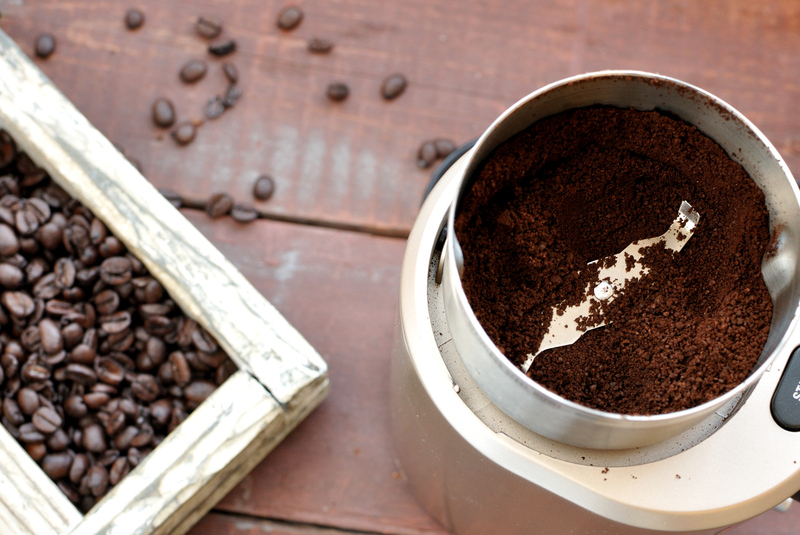Easy Ways to Ban Damp Smells from Your Home
Posted on 20/09/2025
Easy Ways to Ban Damp Smells from Your Home
Damp smells in the home are not just unappealing; they can also signal underlying issues such as mold, mildew, or poor ventilation. These odors can make your living space uncomfortable and may even have health impacts if not addressed. The good news is that eliminating musty odors and preventing them from returning is entirely possible with some practical steps and household ingenuity. In this comprehensive guide, we'll walk you through easy ways to ban damp smells from your home, ensuring a fresher, healthier, and more inviting environment for you and your loved ones.
Understanding Why Damp Smells Occur
Damp odors typically originate from moisture buildup, mold growth, or insufficient airflow. Recognizing the root cause is crucial for effective treatment. Common culprits include:
- Leaky roofs, windows, or pipes
- Poor ventilation in bathrooms or kitchens
- Lack of sunlight in certain rooms
- Basements or crawl spaces with inadequate waterproofing
- Storage of wet items indoors
These conditions provide the perfect environment for mold, mildew, and bacteria, which emit the notorious damp, musty smell we all want to avoid.

Quick Assessment: Is It Just Odor, or an Underlying Problem?
Before attacking the smell itself, it's important to determine if there are deeper issues. Inspect key areas, such as:
- Walls: Look for stains, bubbles, or peeling paint/wallpaper
- Ceilings: Check for discoloration or sagging panels
- Floors: Carpets and wooden floors may feel damp underfoot or show signs of mold
- Beneath sinks, behind toilets, and near water-using appliances: Look for leaks and condensation
If you find signs of water ingress or visible mold, address these issues first, as any deodorizing will be temporary without resolving the source.
Top Easy Ways to Ban Damp Smells from Your Home
1. Improve Ventilation in Affected Areas
Good air circulation is essential for eliminating stale, damp odors. Here's how to improve ventilation:
- Open windows regularly to allow fresh air exchange.
- Use exhaust fans in kitchens and bathrooms, especially after showering or cooking.
- Install window vents or trickle ventilators if frequent window opening is impractical.
- Place oscillating fans or portable air circulators in trouble spots.
- Move large furniture away from walls to allow air to circulate behind them.
2. Dehumidify to Reduce Moisture Levels
High humidity levels create a breeding ground for musty smells. Combat excess moisture using these simple measures:
- Set up an electric dehumidifier in problem rooms. These devices draw moisture from the air, drastically reducing dampness.
- For a natural option, place bowls of baking soda, rock salt, or charcoal briquettes in affected areas to absorb moisture passively.
- Hang desiccant packs in closets, cabinets, and corners.
- Always use lids on aquariums or water features, and fix any drippy pipes or taps.
3. Tackle Mold and Mildew at the Source
Mold and mildew not only cause unpleasant odors but can threaten your health. To banish these organisms:
- Scrub surfaces with a mixture of vinegar and water (1:1 ratio). Vinegar acts as a natural, non-toxic antifungal agent.
- For tougher spots, try a solution of hydrogen peroxide (3%) or commercially available mold removers.
- Always wear gloves and ensure proper ventilation when cleaning moldy areas.
- Dispose of heavily infested materials (like old carpets or wallpaper) as they can be impossible to fully decontaminate.
4. Clean and Dry Soft Furnishings
Fabrics, carpets, curtains, and upholstery are notorious for holding on to damp, musty smells. Here's how to freshen them up:
- Launder curtains, cushion covers, and slipcovers regularly with added vinegar or baking soda for odor neutralization.
- Steam clean carpets or have them professionally cleaned.
- Air out rugs and mats outdoors in sunlight--which naturally kills bacteria and mold spores.
- Use fabric-safe sprays or sachets containing activated charcoal for ongoing odor absorption in closets and drawers.
5. Harness the Power of Natural Air Fresheners
Banishing damp odors doesn't mean masking them with artificial scents. Instead, try these natural alternatives:
- Simmer a pot of water with citrus peels, cloves, and cinnamon to infuse your home with a clean, spicy aroma.
- Use houseplants like peace lilies, spider plants, or Boston ferns to help purify air and absorb excess moisture.
- Create DIY air fresheners using essential oils such as tea tree, eucalyptus, or lavender, which naturally combat fungi.
- Arrange bowls of fresh coffee grounds or activated charcoal in musty corners--these are excellent odor absorbers.
6. Keep Surfaces and Appliances Dry
Damp surfaces are breeding grounds for musty odors. Maintain a clean, dry home by:
- Wiping down bathroom tiles, showers, and sinks after use.
- Regularly checking washing machines and dryers for trapped moisture--leave doors open between uses to air them out.
- Ensuring dishwashers are empty and left open after a cycle so that no water sits stagnant inside.
- Keeping countertops and kitchen surfaces clear of dish piles or wet towels.
Long-Term Solutions for Preventing Damp Smells Altogether
Prevention is the most effective "cure" for recurrent damp or moldy smells in your living spaces. Adopt these practical strategies for the long haul:
1. Waterproof and Insulate Problem Areas
Consider investing in professional waterproofing or insulation for:
- Basements and crawl spaces
- External walls facing prevailing winds or frequent rain
- Floors above unheated garages or cellars
This will keep moisture out and help maintain a consistently dry indoor environment.
2. Regular Home Maintenance
Keep your home in tip-top shape by:
- Fixing leaky roofs, window seals, and plumbing as soon as issues appear
- Cleaning gutters and downspouts to prevent water ingress around foundations and walls
- Monitoring and repairing any cracks in foundations or external walls
- Re-sealing bathrooms and kitchens every few years with water-resistant caulk
3. Smart Habits for a Drier Home
- Hang laundry to dry outdoors when possible; if drying inside, use a well-ventilated room and a dehumidifier.
- Promptly dry wet shoes, coats, and umbrellas before storing inside.
- Store seldom-used items in airtight plastic containers to protect them from dampness in attics or basements.
- Check for condensation on windows and walls, especially in winter; wipe down and air these areas regularly.
When to Seek Professional Help
Persistent damp odors after employing all the above tactics could indicate a more serious underlying issue such as:
- Structural water leaks or drainage failures
- Black mold infestation (Stachybotrys chartarum) which can endanger your health
- Hidden damp buildup in walls or foundations
In these cases, consulting a qualified professional is highly recommended. They can assess your property, identify hidden sources of damp, and suggest appropriate remediation.

The Benefits of Regularly Banishing Damp Smells
Eliminating and preventing unpleasant musty odors is about much more than just comfort. The advantages include:
- Improved air quality for you and your family
- Reduced allergy and asthma triggers
- Minimized risk of mold-related illnesses
- Protecting your furniture and home structures from damage
- A fresher, more welcoming ambiance for guests
- Potentially higher property values and better tenant or buyer appeal
Summary: Freshen Up Your Home, Effortlessly
Banning damp, moldy, or musty smells from your home doesn't have to be a massive undertaking. By improving airflow, controlling humidity, using effective cleaning agents, and adopting smart household habits, you'll reclaim your living space from unwanted odors.
Remember, the key to lasting freshness is not just masking odors, but removing the moisture and microbes that cause them. With the easy tips and strategies shared here, you'll be well on your way to a cleaner, healthier, and more enjoyable home environment.
Start today and enjoy every breath you take indoors!




